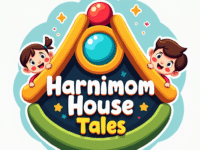
Toddler Tantrums: Try These Gentle Story-Based Solutions
Helping your 1–3 year old navigate big feelings—one bedtime story at a time.
Tantrums at Our House (Sound Familiar?)
When my toddler first threw herself on the floor over a blue cup instead of the red one, I stood there stunned. It wasn’t about the cup. It was about something bigger: she didn’t know how to express what she felt.
Toddlers (1 to 3 years old) are still developing the words for their emotions. When they’re tired, hungry, or overstimulated, they often show us the only way they know how—through meltdowns.
The solution? Not punishment. Not yelling. Not even bribing (even though we’ve all tried it!). The answer is connection. And one of the gentlest, most effective ways to connect is through storytime.
Why Use Storybooks to Handle Toddler Tantrums?
Toddlers learn best through repetition, play, and modeling. Storybooks give your child a chance to:
- See characters express real feelings
- Learn simple phrases to describe emotions
- Understand what to do instead of hitting, biting, or screaming
Most importantly, stories help your child feel safe and seen.
As a mom and children’s book writer, I’ve created and tested books specifically for this emotional stage. Here are my favorites—plus tips to turn tantrum time into calm time.
Gentle Storybooks for Tantrum-Prone Toddlers (1–3 Yrs)
1. “Milo Feels Mad” (Available on Harnimom.com)

Theme: Big feelings, anger, calming down
When Milo the monkey can’t have more banana cookies, he feels mad—really mad! But with deep breaths and mama’s help, he learns what to do with all that fire inside.
Parent tip: Read it BEFORE a tantrum, so your child has language for anger before they explode.
Download Milo Feels Mad
2. “Ellie Finds Her Words”

Theme: Emotional awareness, communication
Ellie doesn’t know what she’s feeling when her toy breaks. Her tummy feels twisty, her cheeks are hot. With her mom’s help, she learns to say, “I feel frustrated.”
Pair with: Our printable feelings chart for toddlers.
Get the book
Get the chart book
3. “Zara Counts to Calm”

Theme: Simple calming techniques
Zara wants the blue crayon but her brother has it. She starts to scream… until she counts: 1…2…3. By ten, she’s calm enough to try again. This book introduces toddler-sized coping tools.
Shop Now
Part of the Calm & Kindness Collection
Real-Life Tips That Actually Help
1. Stay Close, Stay Calm
Your toddler can’t regulate on their own yet. They need you to be their calm.
“I’m here. You’re safe. I’ll help you.” — That one sentence works wonders.
2. Read These Books Daily (Not Just During Tantrums)
Repetition builds understanding. Think of it as emotional practice.
3. Let Your Toddler See Themselves in the Story
After reading, say things like, “Remember how Milo felt mad too?” This builds empathy.
4. Use Printables as Visual Tools
Visual emotion charts, breathing cards, or story cutouts help toddlers see their feelings and options.
Explore our Emotional Printables
Free Download: Toddler Tantrum Survival Pack
Want to be ready for the next outburst?
Grab our FREE Tantrum Survival Pack Includes:
- 3 printable calming cards
- Feelings chart
How Storytime Changed Our Tantrum Moments
I used to dread going out with my toddler. The wrong shoe, a broken banana, or too many people in a room could trigger instant tears.
But after weeks of using “Milo Feels Mad” and pointing to our emotion chart daily, I saw a shift. My daughter started saying, “I’m mad!” instead of screaming. She asked for a hug. She even tried counting on her fingers like Zara.
Storybooks didn’t make tantrums disappear. But they helped us navigate them with more peace. And in a toddler’s world, that’s everything.
From One Parent to Another…
You’re doing amazing.
If your toddler is melting down over crackers, socks, or bedtime, it doesn’t mean you’re failing. It just means they need tools.
Through stories, routines, and calm presence, you’re giving them those tools.
You’ve got this.













